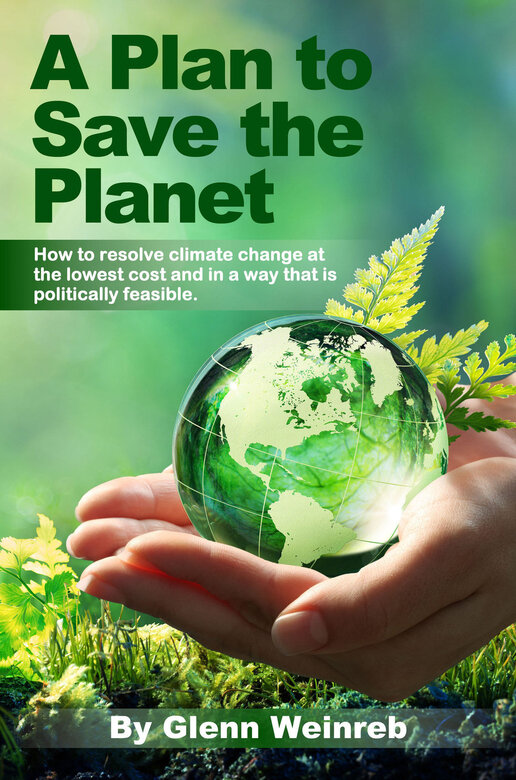
A scathing rebuke of incrementalism in the face of an undeniable climate crisis, A Plan to Save the Planet: How to resolve climate change at the lowest cost and in a way that is politically feasible by Glenn Weinreb is a well-penned thesis that makes a concerted attempt to redirect the future.
Weinreb made millions of dollars as a product designer for laboratory and factory technology, and had a revelation about his potentially destructive place in the world, giving the book an implicit level of authority from the start. Following his personal background is a comprehensive assessment of our present circumstances in relation to carbon consumption and emissions, along with a bold vision for measurable change in the very near future.
Tackling the issue from political, social, economic, historic, and purely compassionate angles, the book’s conclusion is that solving our carbon addiction and self-destruction is possible in the next thirty years, but decisive and relentless action needs to begin immediately on a number of fronts. Weinreb seems as comfortable discussing geological history and climatic patterns as he does political back-scratching and legislative procedure. Throughout, he acts as a methodical yet engaging professor of an expansive and multi-disciplinary issue. Anthropological philosophy and economic trends weave into critiques of capitalism and cutting-edge green energy R&D, making for a truly mind-expanding experience.
Unlike so much other writing on the subject, the book also fearlessly calls out the forces that have stymied progressive change in decarbonization policy – a reminder to readers that those making selfish decisions about our planet’s future have names, job titles, election cycles, and addresses. However, Weinreb is not hysterical in his condemnation or apocalyptic in his tone; he worked with engineers and manufacturers in carbon-heavy industries for much of his career, and notes the positive impact that fossil fuel consumption has had on human society.
It’s unusual for someone crafting such a far-reaching policy proposal to embrace this degree of nuance, conveying a degree of emotional seriousness, in addition to cold hard facts. Granted, Weinreb’s argument includes a plethora of figures, graphs, historical trends, and the findings of existing research, but these are presented as seamless parts of a larger narrative, as opposed to dense presentations of academic data. He is able to break complex concepts into manageable pieces, and structures his arguments in ways that are easy to follow for the layman, but comprehensive enough for actual policymakers. At the end of the book, it is hard to imagine not nodding along in agreement, eager to take the next step in pushing this proposal onto the US president’s desk.
There are very few technical critiques to offer, as the editing is clean and the prose flows well. There are occasional moments where personal bias could be said to skew the framing of facts, while some of the simplified metaphors do become clumsy – e.g. climate monkeys and carbon gorilla – but these small moments are dwarfed by how impressive and accessible this book is for almost any reader, young or old, right or left.
All told, A Plan to Save the Planet is a hard-hitting, eye-opening, and essential proposal that is ultimately persuasive, and should hopefully find a wide audience.
Book Links
STAR RATING
Design
Content
Editing
Get an Editorial Review | Get Amazon Sales & Reviews | Get Edited | Get Beta Readers | Enter the SPR Book Awards | Other Marketing Services























Leave A Comment